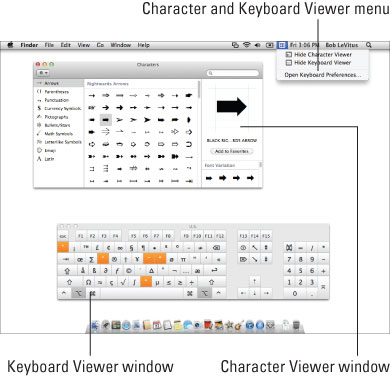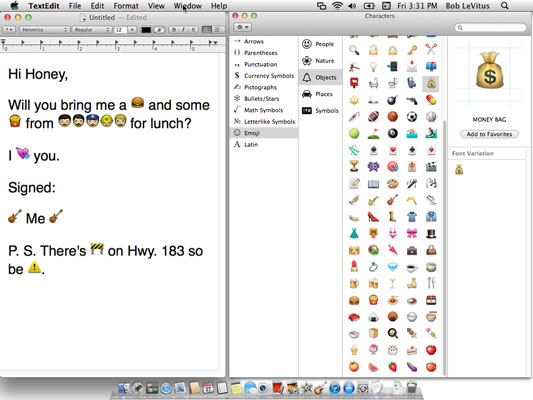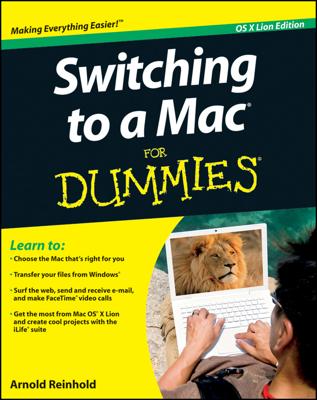No one uses the keyboard and mouse in the same way. The Keyboard System Preferences pane in Mac OS X Mountain Lion offers several tabs to enable you to modify the behavior of your keyboard in a myriad of ways. So the first thing to do is open the Keyboard preferences pane by choosing Apple→System Preferences and clicking the Keyboard icon.
The Keyboard System Preferences pane has two tabs: Keyboard and Keyboard Shortcuts.
Keyboard tab
On the Keyboard tab, you can adjust your settings in the following ways:
Drag the Key Repeat Rate slider to set how fast a key repeats when you hold it down. This feature comes into play when (for example) you hold down the hyphen (-) key to make a line or the asterisk (*) key to make a divider.
Drag the Delay until Repeat slider to set how long you have to hold down a key before it starts repeating.
You can type in the box that says Type Here to Test Settings to test your settings before exiting this tab.
If you have a notebook Mac (such as a MacBook, MacBook Pro, or MacBook Air), you also see one or more of these additional features:
Use all F1, F2 Keys as Standard Function Keys: If this check box is selected, the F keys at the top of your keyboard control the active software application.
To use the special hardware features printed on each F key (display brightness, screen mirroring, sound volume, mute, and so on), you have to press the Fn (Function) key before pressing the F key. If the check box is left deselected, you have to press the Fn key if you want to use the F keys with a software application. Got it? Good.
Finally, these keys may not work if you use a third-party keyboard (one not manufactured by Apple).
Adjust Keyboard Brightness in Low Light: This check box turns your laptop’s ambient keyboard lighting on and off.
Turn Off When Computer Is Not Used For: This slide control lets you determine how long the ambient keyboard lighting remains on when your computer isn’t in use.
Of course, if your notebook computer doesn’t have ambient keyboard lighting, as many don’t, you don’t see the last two items.
Show Keyboard & Character Viewers in the Menu Bar: This check box adds a new menu for opening either of these useful windows.

Click Emoji in list on the left of the Character Viewer window to insert whimsical smiley faces and hundreds of other cute images into your documents.

Input Sources button: Switches to the Language & Text System Preferences pane’s Input Sources tab, where you can display one or more foreign language keyboards in the Input menu.
The Input menu and the Keyboard and Character Viewer menu are one and the same. If you select one or more foreign keyboards, it changes from the rather tame icon shown to the flag of the selected keyboard (it’s the Lithuanian flag, by the way).
Modifier Keys button: Lets you change the action performed by the Caps Lock, Control, Option, and Command keys. It’s particularly useful if you use a non-Apple keyboard, although it works just fine on Apple keyboards too.
Keyboard Shortcuts tab
Not only can you add, delete, or change keyboard shortcuts for many operating-system functions (such as taking a picture of the screen or using the keyboard to choose menu and Dock items), but you can also add, delete, or change keyboard shortcuts for your applications.
To begin, choose the Keyboard Shortcuts tab in the Keyboard System Preferences pane. Now you can do any or all of the following:
To change a shortcut, first click the appropriate application, preference, or feature in the left column. Next, double-click the shortcut you want to change on the right side of the right column (for example, F3 or cmd+G). The old shortcut becomes highlighted; when it does, press the new shortcut keys you wish to use.
To add a new shortcut, click the + button. Choose the appropriate application from the Application pop-up menu, type the exact name of the menu command you want to add in the Menu Title field, and then press the shortcut you want to assign to that command into the Keyboard Shortcut field.
If the shortcut you press is in use by another application or preference, a yellow triangular caution symbol appears next to it. It really is that simple.
To delete a shortcut, choose it and then click the – button.

